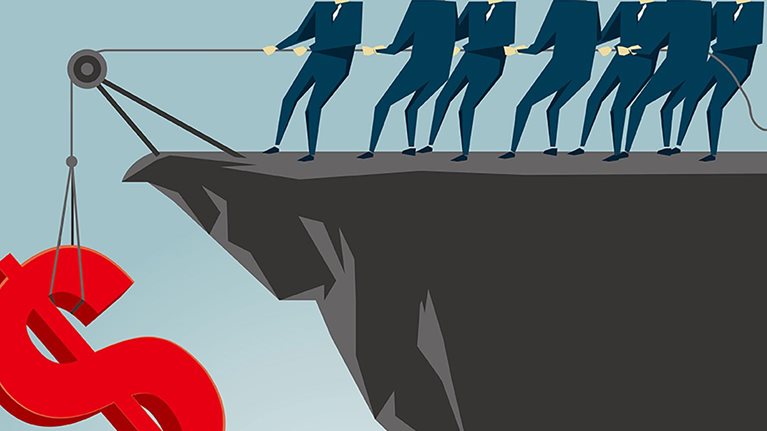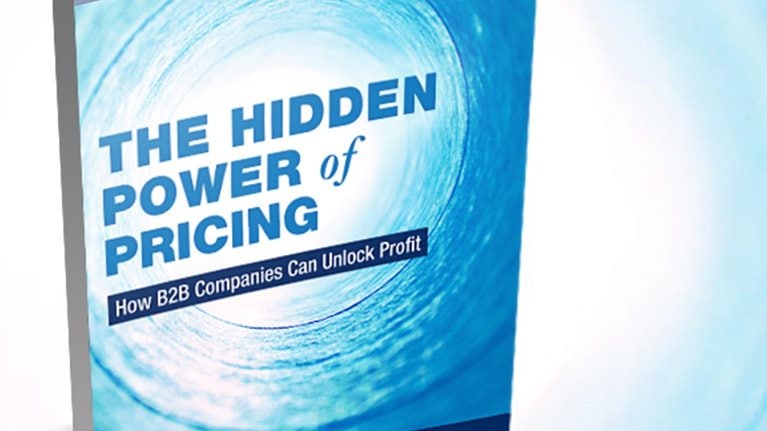Pricing always involves risk and uncertainty. You make the best decision you can, but you can’t tell how it will play out until you put your price in front of customers and see how they react. That’s true whether you are changing list prices, adjusting discounts, altering your negotiating posture, or introducing a new pricing model. To get better at pricing, you need to get better at assessing and minimizing risks and uncertainties. As in a game of poker, your gamble has a better chance of success if you understand the strength of your hand.
In the past few years, massive increases in data availability and processing power, along with advances in predictive modeling and risk management, have given rise to a whole array of tools and solutions for assessing and quantifying pricing risks. What we are now seeing, in fact, is a pricing renaissance that opens up new opportunities to create more value from pricing without jeopardizing profits. In particular, applied technology offers a host of benefits to help companies manage pricing risk:
Deeper insights into what works. By making pricing and its impact more transparent, new analytic tools improve accountability and enable businesses to experiment with a range of price points to see how they affect sales. Consumer goods companies now have the data and tools to evaluate more than 90 percent of in-store promotion events, where not so long ago they struggled to reach 65 percent. At the same time, pricing simulators allow businesses to merge data on price sensitivity with analyses of switching behavior to predict how a product might lose or gain volume and share as prices rise or fall.
Greater pricing precision. Now that companies can isolate the impact of price levels and tactics on individual customer segments and channels, they can offer more tailored prices to more segments than ever before. For instance, many consumer packaged goods manufacturers have different pricing strategies for drug stores, groceries, hypermarkets, and discounters based on the consumers who frequent these channels and whether they are stocking up, filling in, or consuming immediately. Some B2B businesses, meanwhile, are able to link historic pricing and sales data with independent market indicators at a highly granular micromarket level—perhaps even by zip code—to get a much finer grasp of what drives performance and recalibrate their strategy accordingly. A growing number of retailers are using point-of-sale and loyalty-card data to develop individualized pricing and promotion strategies that seek not only to maximize the value of a shopping basket but also to expand their share of the profit pool.
Faster response times. The ability to refresh data more frequently and integrate information from multiple sources is allowing companies to adjust price levels in real time to address peaks in demand, fluctuations in inventory levels, and competitors’ pricing moves. To keep their prices lower than their competitors’ on key products, Amazon and Walmart Online have been known to adjust prices several times a day. Uber applies “surge pricing” at peak periods when demand exceeds driver availability. One technology-products distributor provides automated real-time guidance to reps handling customer orders, for instance, by warning them not to grant additional discounts if a product’s sales velocity is outstripping the stock-replenishment rate.
But these data-driven developments bring challenges as well as benefits. Today’s companies face a capability “arms race”—or rather two: not just with direct competitors, as each plays its pricing hand as best it can in front of the same customers, but with those very customers as well. Indeed, procurement, with its access to sophisticated tools and practices and often greater allocation of management attention and investment, has arguably gained the upper hand over pricing in the past decade or two, in part because it’s seen as less risky. Most companies would rather cut their own costs or persuade suppliers to drop theirs than ask customers for higher prices. Although procurement and pricing are two sides of the same coin, they are poles apart where perceived risk is concerned.
Technology has an important role to play in reducing some of this pricing risk, as the plethora of analytics packages and boutiques attest. But navigating this territory can be treacherous. Plenty of companies invest in technologies only to find that the promised solutions and profits fall short. To get the most out of their time and money, smart companies follow three simple rules:
Drive your pricing tool; don’t let it drive you. Start by being clear about your overall business strategy, how your pricing strategy supports it, and the capabilities you have to get you there. Then specify exactly what you want your pricing or promotions tool to do. What outcomes do you want to see, and what processes do you want to support? Choose tools and analytic methods that enable, not dictate, your processes. If a solutions vendor expects you to transform your strategy to fit in with its analytic model, it’s probably not the right choice for you.
Balance aspiration with reality. Successful companies have a good sense of the landscape around them, from the options and functionalities available on the market to what their competitors, suppliers, and customers are doing. And they are quick to switch course as needed, realizing that a souped-up Excel model won’t get them far if their rivals are embracing enterprise-level solutions. Equally, smart operators aren’t led astray by “shiny new” technologies. It’s easy to overengineer a solution, and there are always limits—legal, regulatory, practical—to how far you can differentiate your pricing across customers, channels, locations, and time. A leading-edge solution may support an array of advanced features, but your company’s capabilities, customer sophistication, and industry dynamics may not.
Involve the front line early and often. For any new pricing tool to succeed, the front line needs to trust that it is accurate, delivers the required insights, and yields benefits that outweigh the effort associated with learning it, using it, and keeping the information up to date. Fail to engage the front line and your spiffy new tool is likely to suffer the business equivalent of organ rejection. One company developed sophisticated algorithms to determine market-clearing prices for its perishable products, but didn’t think to explain the finer points to its sales and finance people. Not surprisingly, they weren’t able to build the new pricing regime into their selling stories and sales targets, missing valuable opportunities. Successful companies invest in robust training programs and step-by-step demos that show front-line users what the tool does, how it works, and how it makes their lives easier. They enlist superusers right from the beginning to write the specs and stipulate the output they want. And they set up a cross-functional advisory council to create awareness across the organization by communicating milestones, early successes, and impact.
Finding the right pricing solution and embedding it into your business routines is only the beginning. Top-performing companies go a step further and change how they operate so that they can deliver better pricing to the front lines and spur real growth. Here’s how:
Raise the bar. The pricing renaissance is reflected in companies’ abilities to gain clearer insight into what works, construct granular price segments, and adjust prices in real time—all of which enables them to understand what “good” looks like in the new environment and raise their bar for pricing precision, performance, and value creation. For one industrial-services company, being able to drill down to a granular view of pricing performance revealed that some micromarkets that were doing very well on an absolute basis were actually underperforming their external peers. Meanwhile, some seemingly poor performers were outstripping comparable groups. Insight into these nuances enabled the company to recalibrate its expectations at a micromarket level and set higher (but still achievable) targets across the pricing organization.
Improve agility. Dynamic opportunities call for faster decision making. That requires user-friendly pricing tools with real-time analytics capabilities that can streamline discount approval processes, eliminate obsolete steps, and make accurate pricing recommendations. But tools are only half the battle. Sales managers and reps also need processes that equip them to deliver better prices in the field, such as a tight link between price recommendations and advanced systems that can change store prices on the fly. By replacing time-consuming decision-making processes with guidelines, guard rails, and fast-track escalation protocols, companies can become nimble enough to capture fleeting opportunities before they vanish. One B2B company created a dynamic deal-scoring system that provides reps negotiating a sale with data on statistically comparable deals so that they can fine-tune discounts on the spot. Previously, any discount request outside a narrow range would trigger a lengthy exception process escalating the decision to sales and business management; now, reps have instant access to prices achieved in similar cases, greatly improving their chances of closing the deal there and then.
Capture the right data. In today’s digital world, data availability is seldom a barrier, but data quality frequently is. To generate the deep insights that drive smarter pricing decisions, companies need to be rigorous about the data they use, how they get it, and how they analyze it. That doesn’t just mean using “data scrubbers” to clean it up, but developing processes and incentives to get the right data in the first place. For instance, sales reps are often reluctant to enter lost deals into the system, making it difficult to analyze why deals are won or lost. One company’s solution was to build a deal-prospects pipeline that didn’t pay out compensation for a win unless the successful sales rep had logged the deal in the system at the outset. Thanks to this incentive, the company captured invaluable data on losses as well as wins to help it understand which pricing decisions were creating value. In turn, this analysis was fed back into the system so that it could detect when a deal was at risk of being lost and suggest steps to convert it into a win. Companies also need to look at data sources outside their organization to highlight new opportunities. If a business-services company identifies a surge in construction in a particular micromarket, for instance, leaders can fine-tune the prices of relevant products and services to turn it into a pocket of growth.
Modernize metrics. Cliché though it is, what gets measured gets done. Yet many companies with advanced analytical capabilities are finding their scorecards no longer capture what they are doing with sufficient precision, depth, or timeliness to be useful for decision making. Conventional metrics can’t tell executives whether dynamic pricing is working, for example, or whether a team is underperforming in a booming market where prices and volumes are rising across the board. Good metrics don’t just assess performance in hindsight but allow leaders to extrapolate into the future to identify growth opportunities. Such insights take some of the uncertainty out of pricing, enabling executives to play their hand better by tailoring pricing decisions more closely to what’s happening on the ground.
Bring the organization along. Technology takes you only so far. To reduce the risk of lost pricing profits, people need to let go of old biases, abandon gut-feeling decision making, and embrace the deep insight, granularity, and responsiveness that the pricing renaissance brings. Although every company is different, a few steps will be common to many: devolving decision-making rights to the front line; demanding data-driven insights as a basis for decisions; automating manual processes; replacing hard-and-fast rules with guidelines to improve flexibility and responsiveness; and speeding up the cadence of operations (for instance, by replacing monthly progress meetings with brief daily reviews). To get the change program off on the right track, set realistic expectations, and communicate them clearly. Establish a culture that values rapid test-and-learn experiments as part of a journey to better results. And ensure new priorities are reflected in new behavior, especially by leaders. When one global packaged-food manufacturer introduced a new solution for optimizing promotions, the executive in charge reinforced its importance by discussing its outputs not just in quarterly leadership meetings at HQ but with front-line staff in weekly reviews.
Harnessing the power of the pricing renaissance isn’t easy, but the rewards more than justify the effort. As companies gain more certainty about how their price actions will play out, they can recapture the value they’ve ceded to sophisticated buyers. In the process, they can regain their position as masters of the single greatest lever for value creation: pricing.


